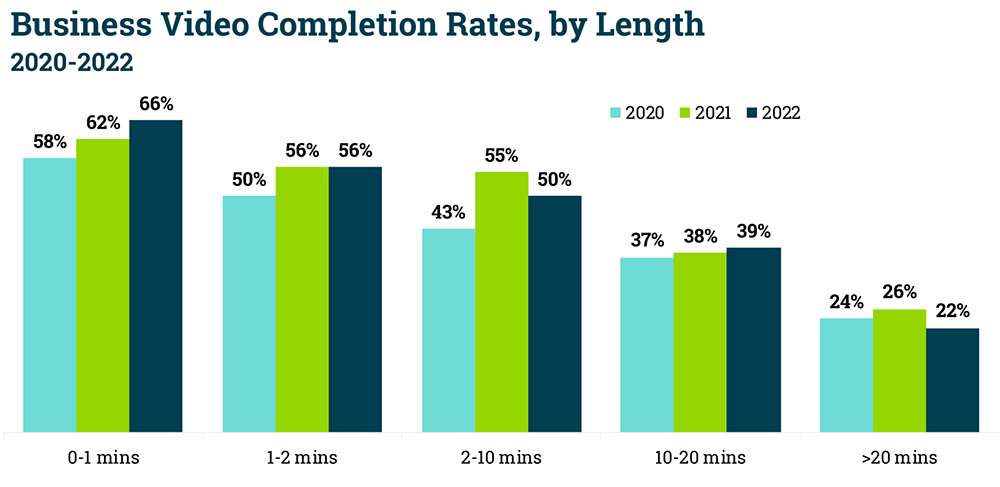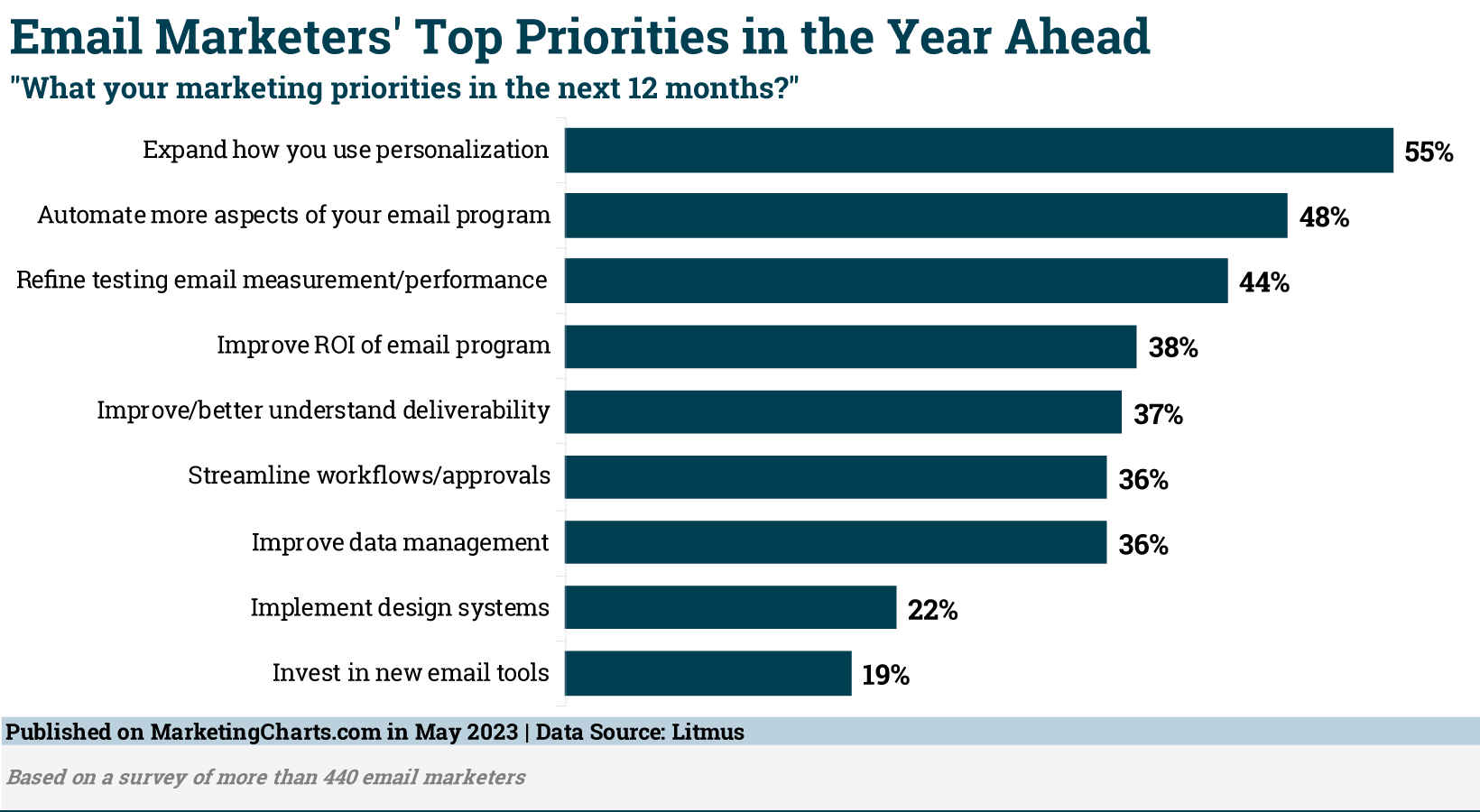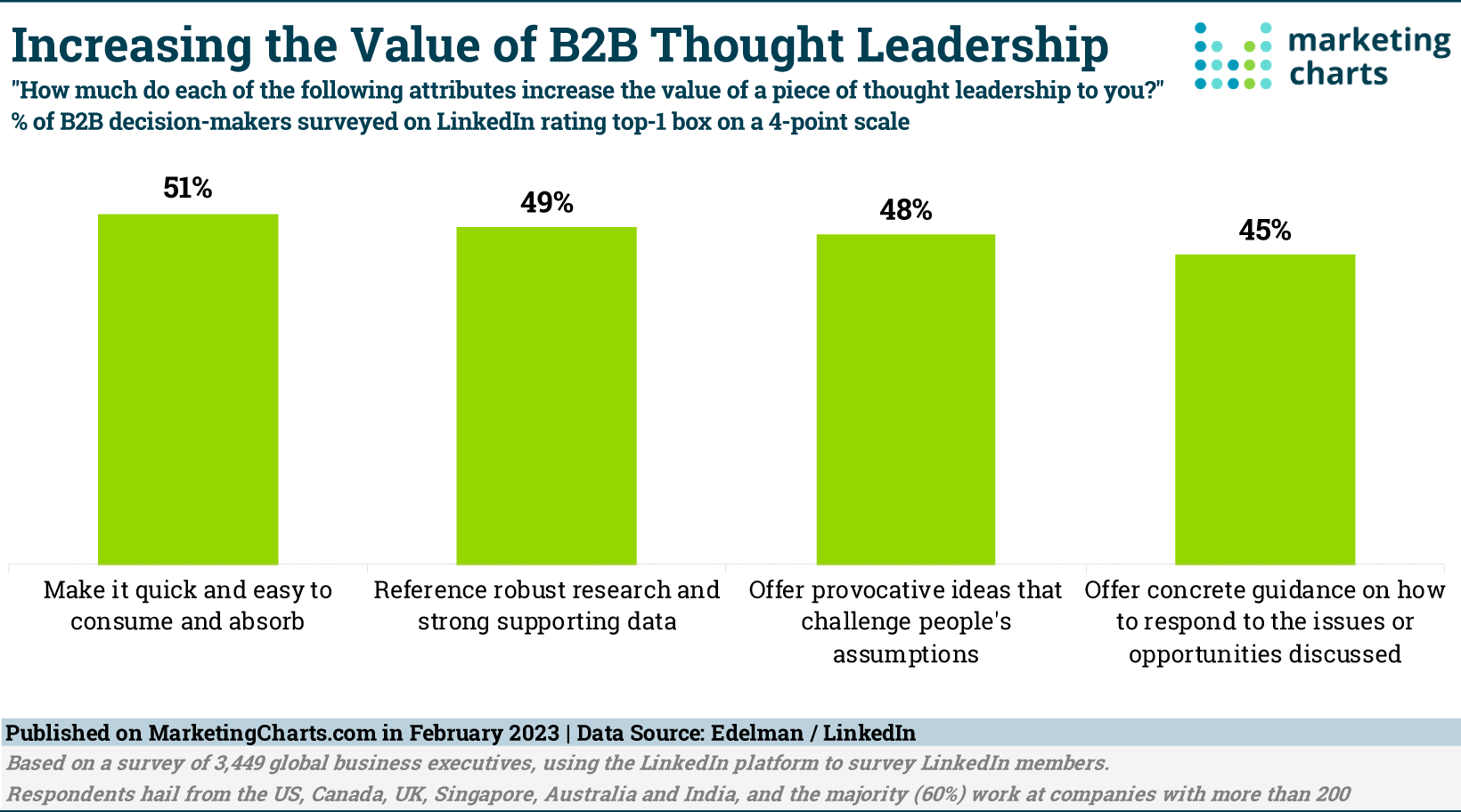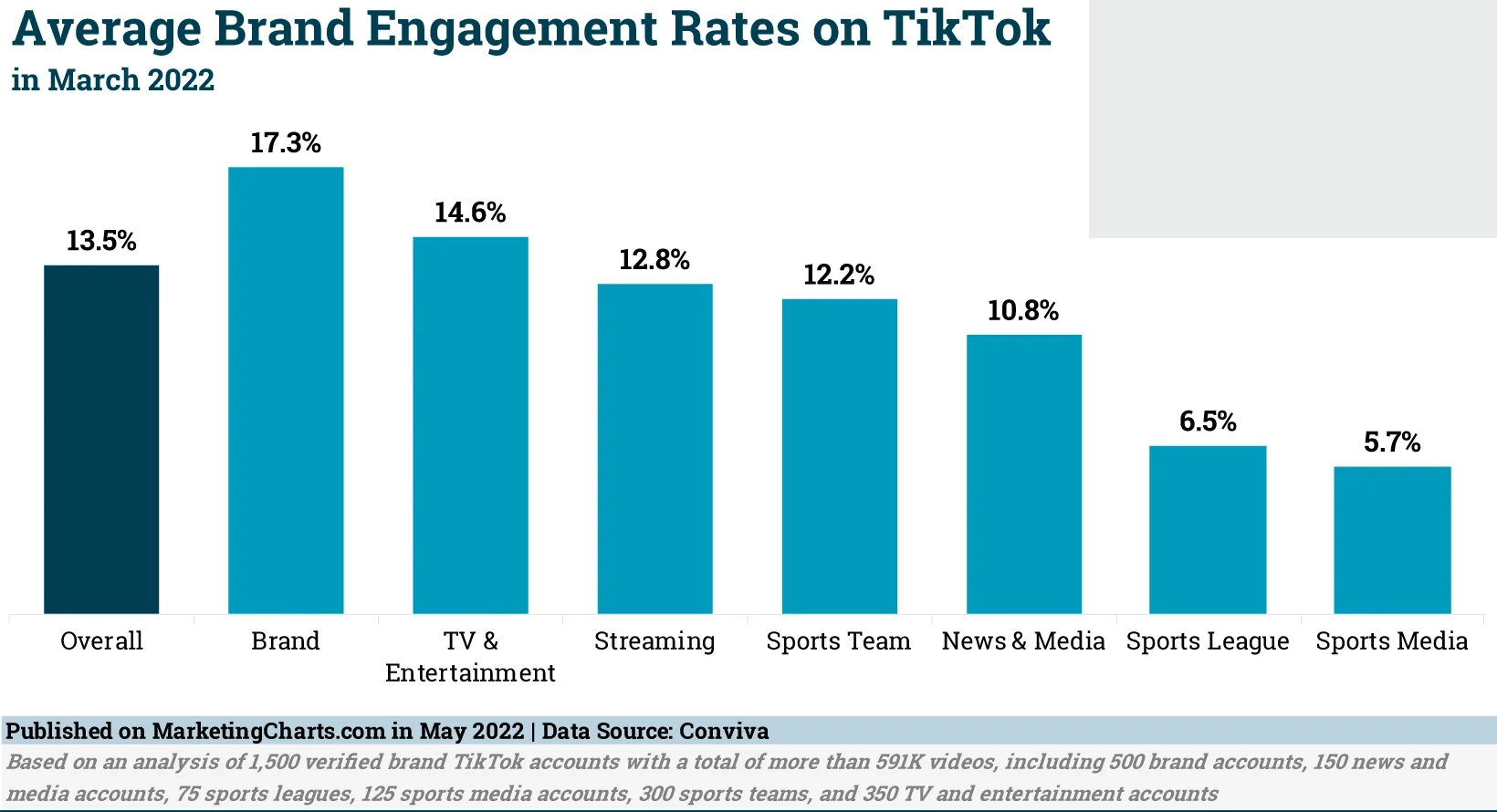
by Lori Berson | Feb 14, 2024 | Content Marketing, Marketing, Marketing Strategy
Gone are the days of text-heavy blog posts that leave your audience hungry for more. To captivate and engage in today’s digital landscape, you need to serve up an irresistible all-you-can-eat content buffet that’s not only high-quality but also innovative and engaging. This means breaking away from traditional formats and exploring new, creative ways to capture your audience’s attention.
Let’s explore the essential ingredients marketers can use to satisfy and delight their audience.
Visuals: Tantalizing the Eyes and Appetite
Forget boring stock photos. Whet their appetite with mouthwatering visuals like infographics, charts, videos, gifs, original graphics, and even AI-generated imagery. These eye-catching elements can transform your content from bland to brilliant and make complex information more digestible while adding flavorful brand flair.
With user-friendly tools like Canva and Adobe Express (both offer free versions), anyone can cook up amazing visuals.
Podcasts: Audio Amuse-Bouches
Podcasts are soaring in popularity, offering an intimate, screen-free way to connect with your audience. Strategically sprinkle podcast episodes across your menu to build brand awareness and deliver value through stories, educational content, discussions, and industry insights. These AI tools make it simple to turn text into captivating podcasts: Wondercraft, Riverside, and Adobe Podcast.
Remember to promote new episodes through email, newsletters, social media, and your blog for a multi-channel approach.
Interactive Content: Letting Your Audience Sample the Goods
Interactive content invites your audience to actively participate in the experience. Quizzes, games, calculators, image sliders, AR filters, interactive videos, and other digital tools provide value while capturing contact info.
For example, an interactive calculator provides personalized data guiding users through their buying journey while keeping them engaged. To get started, check out Okendo, Quizgecko, and Meiro.
User-Generate Content (UGC): Customer-Crafted Signatures
User-generated content offers authenticity and community. Highlight UGC-like social shares, video testimonials, and reviews to show you value your clients while improving engagement. Some easy-to-use tools include GatherUp, Boast, and TrustPilot.
Time To Dine on Captivating Content!
Like an artful chef, captivating content requires the right blend of visuals, audio, interactive elements, and UGC artfully presented across channels. Serve up your audience a journey that informs, entertains, and provides value. Do this, and your content will leave them satisfied and eager to come back for more.
For help with your content strategy and marketing, schedule a call or email Lori Berson at lberson@BersonDeanStevens.com.
BersonDeanStevens has been a recognized brand strategy and marketing leader for over 25 years. We work in partnership with you to differentiate your brand and achieve your business goals. Client list.

by Lori Berson | Aug 15, 2023 | Content Marketing, Marketing, Video, Video Marketing
Recent research indicates that nearly 75% of businesses utilize video marketing as an integral part of their sales and marketing strategy, primarily to enhance engagement. However, do viewers truly find these videos engaging? The latest Vidyard Video in Business Benchmark Report examines completion rates for business-related videos and provides insights into various video benchmarks.

Video Length Matters
The average duration of business-related videos on Vidyard’s platform has steadily increased over the years from 4 minutes in 2019 to slightly over 6 minutes in 2020, nearly 10 minutes (9:58) in 2021, and 15 minutes and 31 seconds last year. Notably, 60% of videos created for business purposes, such as supporting sales, marketing, and communication efforts, are 2 minutes or less in length. Among these, 35% are up to one minute long, and an additional 25% range from 1 to 2 minutes.
Interestingly, although the average video length has risen, there’s a trend toward shorter videos. Vidyard’s data shows an increase in the share of videos up to 10 minutes long and a decrease in the proportion of longer videos. The most notable shifts include a rise in videos lasting 2 to 4 minutes and a decline in those exceeding 20 minutes.
Engaging Viewers
Vidyard recommends that businesses aim for videos under 2 minutes in length (except for webinars). This is due to a significant drop in viewer engagement as videos become longer. In fact, videos lasting more than 2 minutes generally experienced either flat or decreasing completion rates compared to the previous year.
Completion rates were highest for videos lasting 1 minute or less (66%, up from 62%). Videos spanning 1 to 2 minutes also showed solid engagement, with an average completion rate of over 50% (56%, consistent with last year). For videos lasting 2 to 10 minutes, 50% of viewers watched until the end, a decrease from the previous year’s 55%. Videos lasting 20 minutes or more had a completion rate of 22%, down from 26% in 2021.
Additional Business Video Insights
Beyond video length and completion rates, the study offers various benchmarks for business-related videos on Vidyard’s platform in 2022. Here are some key findings:
- Video Creation: Video creation for business purposes increased by 29% year-over-year on Vidyard’s platform, with 72% of those videos being user-generated (created using Vidyard’s video tools).
- Industry Differences: The number of videos published by businesses varied by industry. Financial services (average of 934 videos per business) and high tech (917) were the most prolific, while communications businesses produced the fewest (103).
- Company Size Matters: Companies with over 5,000 employees published an average of 1,779 videos in 2022, a 55% increase from 2021. Those with 601 to 5,000 employees published 1,211 videos, marking a 22% increase. Smaller companies (600 or fewer employees) created fewer videos, with businesses having 0 to 30 employees publishing an average of 310 videos.
- Popular Video Types: The most common types of produced videos that marketers invested in are product demo videos (47%), followed by explainers (35%), recorded webinars (33%), and how-to videos (31%).
Video marketing for businesses is evolving, with shorter videos garnering higher engagement rates. Understanding these trends and benchmarks can empower businesses of all sizes to create effective and engaging videos tailored to their target audiences.
About the Data: The information for the report was collected from anonymized video creation data from a sample of Vidyard customers, representing 1.778 million videos. The data encompasses the time period of January 1, 2022 to December 31, 2022.
Need assistance with your video production and marketing? Schedule a call or email Lori Berson at lberson@BersonDeanStevens.com.
BersonDeanStevens has been a recognized brand strategy and marketing leader for over 25 years. We work in partnership with you to differentiate your brand and achieve your business goals. Client list.

by Lori Berson | Aug 4, 2023 | AI, artificial intelligence, Content Marketing, Marketing
Generative AI has witnessed tremendous hype in recent years, capturing the imagination of marketers worldwide. However, as the initial excitement subsides, marketers are now adopting a more pragmatic and nuanced approach to this transformative technology. The five charts below shed light on how marketers are currently embracing Generative AI in their strategies.
1. Generative AI’s Evolutionary Journey

The first chart illustrates the evolutionary journey of Generative AI in the eyes of marketers. Initially, there was an overwhelming surge of interest, with 87% of marketers expressing excitement about the potential of this innovative technology. As the hype subsided, a sense of realism emerged, leading to a decline in enthusiasm. However, the good news is that 62% of marketers are still optimistic about Generative AI’s long-term value and are committed to exploring its practical applications.
2. Challenges and Barriers

Chart two highlights the primary challenges faced by marketers in adopting Generative AI. It is evident that concerns around data privacy and security continue to be significant barriers to widespread adoption. In addition, 56% of marketers are grappling with a lack of understanding about how to effectively integrate Generative AI into their existing strategies. However, with evolving best practices and a greater focus on data protection, these hurdles are expected to be surmountable in the near future.
3. Incorporating Generative AI Into Content Creation

The third chart showcases how marketers are leveraging Generative AI in content creation. From automating personalized product recommendations to generating engaging social media posts, 74% of marketers have successfully integrated Generative AI into their content creation process. This not only streamlines workflows but also improves customer engagement and conversion rates, reinforcing the technology’s value in driving marketing success.
4. Improving Customer Experience

Chart four highlights Generative AI’s impact on customer experience. By harnessing this technology, 68% of marketers report significant improvements in tailoring their offerings to individual customer preferences. Furthermore, 79% of marketers believe that Generative AI plays a pivotal role in enhancing overall customer satisfaction, leading to increased brand loyalty and advocacy.
5. ROI and Future Investments

The final chart illustrates marketers’ perceptions of Generative AI’s return on investment (ROI) and future investment plans. 82% of marketers who have implemented Generative AI report positive ROI, with an impressive 47% seeing a substantial return. Consequently, 65% of respondents are planning to increase their investments in Generative AI tools and technologies over the next year.
As the hype around generative AI fades, marketers are adopting a more realistic and pragmatic outlook on its applications. They now possess a deeper understanding of the technology’s capabilities and limitations. Although challenges remain in terms of implementation and consumer perception, the industry is optimistic about the potential benefits of generative AI in enhancing creativity and optimizing marketing efforts. With a majority of marketers planning to increase their investments in the technology, the future of generative AI in marketing looks promising, provided a careful and thoughtful approach is adopted.
Need assistance with your content marketing? Schedule a call or email Lori Berson at lberson@BersonDeanStevens.com.
BersonDeanStevens has been a recognized brand strategy and marketing leader for over 25 years. We work in partnership with you to differentiate your brand and achieve your business goals. Client list.

by Lori Berson | Jun 23, 2023 | artificial intelligence, Content Marketing, Marketing
In the ever-evolving world of email marketing, personalization and automation are taking center stage. According to a recent report by Litmus, email marketers are prioritizing these strategies to enhance their campaigns and boost engagement. In this article, we’ll explore the positive trends that are driving the industry forward, with a focus on personalization, automation, and the tools that empower marketers to succeed.

Elevating Engagement through Personalization
The power of personalization is being used to forge stronger connections with audiences. The report reveals that a majority (55%) of email marketers are prioritizing the expansion of personalization techniques, recognizing their potential to drive engagement. While personalizing subject lines may not significantly impact open rates, incorporating personalization within the body of the email has proven to yield higher click-through rates. By tailoring content to individual preferences, email marketers can create more meaningful and engaging experiences for their subscribers.
Automating for Efficiency and Effectiveness
Automation is another key focus for email marketers seeking to optimize their campaigns. Nearly half (48%) of the surveyed marketers plan to automate more aspects of their email programs. By automating tasks such as onboarding, post-purchase journeys, and customer reactivation, marketers can streamline production times and ensure consistent and timely communication with their audience. This increased efficiency allows marketers to dedicate more time to strategy and creativity, leading to improved overall results.
Addressing Key Priorities and Challenges
Beyond personalization and automation, email marketers have identified several other priorities for the year ahead. These include refining testing, measuring performance, and improving the return on investment (ROI) of their email programs. Deliverability, workflow optimization, and data management are also key areas of focus. While new email tools are not the primary investment priority, marketers recognize the need for continuous improvement and innovation in their strategies.
Survey Highlights
The report also sheds light on important insights from the surveyed email marketers. Only a quarter (24%) feel their email marketing programs are highly integrated with other channels, highlighting the potential for further integration and collaboration. Additionally, investing in the integration of email with other channels is a priority for 30% of respondents. Common bottlenecks in email production cycles include collecting feedback, content creation, and stakeholder buy-in. Interestingly, over a third of respondents admit to not measuring email ROI, suggesting an opportunity for increased data-driven decision-making. The most commonly used project management tools by the email marketers surveyed are Slack, Jira, Asana, and Trello.
The future of email marketing is bright, driven by the twin forces of personalization and automation. By leveraging these strategies effectively, marketers can enhance engagement, improve efficiency, and build lasting connections with their audiences. By staying agile and embracing innovative tools, email marketers can navigate the ever-changing landscape and continue to deliver impactful and personalized experiences that resonate with their subscribers.
To learn more, download the 2023 State of Email Workflows Report.
Need assistance with your email marketing? Schedule a call or email Lori Berson at lberson@BersonDeanStevens.com.
BersonDeanStevens has been a recognized brand strategy and marketing leader for over 25 years. We work in partnership with you to differentiate your brand and achieve your business goals. Client list.

by Lori Berson | Mar 6, 2023 | artificial intelligence, Content Marketing, Marketing
Edelman and LinkedIn recently conducted a survey of almost 3,500 management-level global business executives, which found that decision-makers are more likely to value thought leadership over traditional product-oriented marketing during an economic downturn.

The survey revealed that 55% of decision-makers would cut products and services that they consider “nice-to-haves” rather than “must-haves” during budget cuts. However, non-critical providers can increase their chances of winning business by demonstrating that they can help a prospect increase their profit margins, minimize losses, retain customers, and win market share.
To achieve this, thought leadership can play a strong role. 61% of decision-makers believe that an organization’s thought leadership can be more effective than traditional product-oriented marketing during an economic downturn. Additionally, 55% of decision-makers believe that non-critical providers must produce high-quality thought leadership to win their business during an economic downturn.
What elements make thought leadership effective?
Decision-makers expect non-critical providers to identify new opportunities or industry trends stemming from the economic downturn, give them information and insights that will make them more effective/successful in their job, and explain how the organization can help their business do well despite the economic downturn.
To increase the value of thought leadership, decision-makers look for content that is quick and easy to consume and absorb, with 51% rating this attribute as a top-1 box score. Additionally, 49% believe that it is crucial for thought leadership to reference robust research and strong supporting data. B2B buyers have previously stated that content including research and data is crucial, and vendors can improve their content quality by incorporating more research and data.
B2B marketers need to focus on thought leadership content during an economic downturn to demonstrate their value to decision-makers. By providing quick, easy-to-consume content that references robust research and strong supporting data, marketers can increase their chances of winning business during tough economic times.
To learn more, download the study.
About the Data: The results are based on a survey of 3,449 global business executives, using the LinkedIn platform to survey LinkedIn members. Respondents hailed from the US, Canada, UK, Singapore, Australia and India, and the majority (60%) work at companies with more than 200 employees.
Need assistance with your marketing content? Schedule a call or email Lori Berson at lberson@BersonDeanStevens.com.
BersonDeanStevens has been a recognized brand strategy and marketing leader for over 25 years. We work in partnership with you to differentiate your brand and achieve your business goals. Client list.

by Lori Berson | Aug 16, 2022 | Content Marketing, Social Media
A new study from Conviva suggests that TikTok engagement rates are closely linked to follower count.

1,500 verified brand TikTok accounts were analyzed with a total of more than 591K videos, including 500 brand accounts, 150 news and media accounts, 75 sports leagues, 125 sports media accounts, 300 sports teams, and 350 TV and entertainment accounts.
Average Engagement Rates
The results show that there’s a strong negative correlation between follower count and engagement rate. So, the more followers, the lower the engagement rate.
For accounts with a follower count of less than 100K, the average engagement rate was a high 28%. Double-digit engagement rates were maintained among accounts with follower numbers of 1-200K (14%) and 2-300K (12%) but then fell below the 10% mark for all accounts with larger follower counts. As such, the lowest engagement rates were for the biggest accounts – with more than 10 million followers – which averaged engagement rates of around 2%.
Overall, the average engagement rate across all of the verified accounts was 13.5%. Brands enjoyed the highest average engagement rate among the various account types identified, at 17.3%, though Conviva notes that brands had the smallest average follower counts (~600,000 on average), which could explain the high rates given the data mentioned above.
Brands that want to increase their follower count should think about increasing their posting frequency, per the report’s findings. Overall, the analyzed accounts posted 189 times from March 2021 to March 2022, a 13% increase from the previous year’s average. However, the top 20 accounts by follower growth averaged 1,345 posts during that period, about 7.1x higher than the average. These accounts averaged around 3-4 posts per day. Moreover, the analysis found that those accounts that posted more frequently (1,250+ times over the year) gained significantly more followers than those that posted less frequently (0-250), though it’s conceivable that frequency was not the only factor here (resources, brand size, advertising, etc., could have all played a role).
Top TikTok Accounts By Follower Count
- Flighthouse (28.1 million)
- PSG (25.2 million)
- ESPN (22.9 million)
- Netflix (22.4 million)
- Overtime (19.2 million)
Among the brand accounts analyzed, Guinness World Records had the most total followers (19.1 million) and the largest year-over-year increase (7.8 million). Roblox was the next-largest in terms of follower size (7.9 million), ahead of Fortnite Official (7.7 million), Red Bull (6.5 million), and Crumbl Cookies (4.7 million). Among the top 50 brand accounts by follower size, #17 Among Us had the highest average engagement rate, of 11.41%.
Need assistance with your TikTok strategy and production? Schedule a call or email Lori Berson at lberson@BersonDeanStevens.com.
BersonDeanStevens has been a recognized brand strategy and marketing leader for over 25 years, including over a decade in marketing and sales automation. We work in partnership with you to differentiate your brand and achieve your business goals. Client list.














